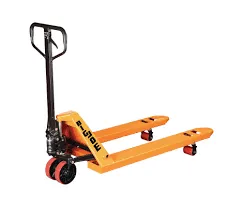


Understanding Fall Arrest Systems A Vital Safety Measure in the Workplace
In various industries, particularly construction, maintenance, and manufacturing, the risk of falls from heights poses a significant safety threat. According to the Occupational Safety and Health Administration (OSHA), falls are among the leading causes of fatalities in the workplace. To combat this peril, fall arrest systems play a crucial role in ensuring worker safety. This article delves into the importance, types, applications, and best practices related to fall arrest systems.
What are Fall Arrest Systems?
Fall arrest systems are designed to safely stop a person who is falling from heights. They primarily consist of a network of equipment and techniques that can prevent injuries in the event of a fall. The fundamental components of a fall arrest system typically include a body harness, a lanyard, an anchorage point, and a deceleration device. When properly installed and utilized, these systems can minimize the risk of serious injuries or fatalities.
Types of Fall Arrest Systems
1. Personal Fall Arrest Systems (PFAS) These are commonly used in industries where workers are required to work at heights. A PFAS typically includes a full-body harness, connecting devices (like lanyards), and an anchorage point to which the harness is attached. The system is designed to stop a fall within a certain distance, usually three to six feet.
2. Guardrails While not a fall arrest system in the traditional sense, guardrails can effectively prevent falls when installed around elevated platforms, roofs, and walkways. They act as a physical barrier to keep workers from falling.
3. Safety Nets Safety nets are used in scenarios where it is impractical to use a personal fall arrest system. They are placed beneath a working area to catch falling workers, thereby reducing injury risk.
4. Controlled Access Zones (CAZs) In some cases, organizations implement controlled access zones as part of their fall protection strategy. These are designated areas where only authorized personnel may enter, thus reducing the likelihood of falls.
Importance of Fall Arrest Systems

The importance of fall arrest systems cannot be overstated. Firstly, they protect workers from potentially fatal accidents. The statistics are compelling; the Bureau of Labor Statistics reports thousands of fall-related injuries each year. A reliable fall arrest system significantly mitigates this risk.
Secondly, fall arrest systems promote a culture of safety. When an organization invests in adequate fall protection measures, it conveys a strong message about valuing employee safety. This investment in safety equipment fosters an environment where workers are more likely to adhere to safety practices, reducing overall accidents and enhancing productivity.
Furthermore, using fall arrest systems can have significant financial implications. Workplace accidents can lead to costly medical bills, legal fees, and lost productivity. By implementing effective fall protection measures, businesses can save money in the long run, not to mention preserving their reputation and worker morale.
Best Practices for Implementing Fall Arrest Systems
1. Training Providing comprehensive training for employees on using fall arrest systems is essential. Workers must understand how to properly wear harnesses, attach lanyards, and identify anchor points.
2. Regular Inspections Equipment should be inspected regularly to ensure its integrity and functionality. Any damaged or worn equipment should be replaced immediately.
3. Assessing Risks Conduct thorough risk assessments of all working conditions involving heights. This assessment should guide the selection and implementation of the appropriate fall arrest system.
4. Clear Work Procedures Establish clear procedures for working at heights, including guidelines for when and how to use fall arrest systems.
5. Engagement and Feedback Encourage workers to provide feedback regarding safety measures. Their insights often reveal areas that require improvement or additional safety precautions.
In conclusion, fall arrest systems are essential for ensuring the safety of workers who operate at heights. By understanding the types of systems available, their importance, and best practices for implementation, organizations can significantly reduce the risk of falls, promote a culture of safety, and enhance overall operational efficiency. It is the responsibility of employers to prioritize fall protection, safeguarding the health and well-being of their workforce.



